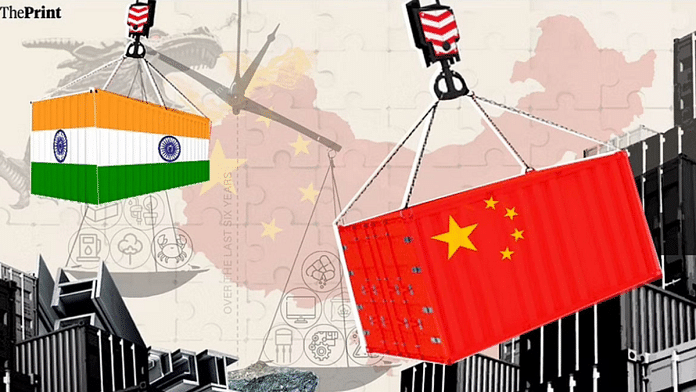When Prime Minister Narendra Modi and Chinese President Xi Jinping met in October 2024, followed by a limited border agreement, it briefly raised hopes that relations between Asia’s two largest countries were stabilising. But one year later, the picture is far more complex. The agreement reduced friction at specific flashpoints, yet it has not shifted the structural realities along the Line of Actual Control (LAC).
China’s People’s Liberation Army (PLA) has continued to improve forward infrastructure with new all-weather roads, surveillance systems, logistics hubs, and model “border villages,” reinforcing an entrenched military posture. India has responded in kind, maintaining roughly 50,000–60,000 troops deployed across the Himalayan frontier. Five years after the Galwan Valley clash, the border remains a space of permanent tension rather than controlled normalisation.
This uneasy military stasis contrasts sharply with emerging signs of renewed economic engagement between the two rivals. Even as India’s security establishment treats China as a primary threat, New Delhi is recalibrating its earlier push for economic distancing. The result is a new phase of what can be called “managed rivalry”: a hard military border, a softening economic stance and an implicit acknowledgment that selective Chinese capital and supply chains remain essential for India’s growth trajectory. This paradox is now shaping Indian policy choices in 2025.
India-China equilibrium
Three trends define India’s China policy today: uncompromising military vigilance, tactical economic re-engagement, and intensified competition across South Asia. These trends reflect a shift away from the decoupling narrative that dominated the immediate post-Galwan period. Instead, New Delhi’s challenge now is risk management—protecting strategic autonomy while leveraging Chinese economic inputs that India cannot yet replace.
Security perceptions continue to be driven by a triad in which China is seen as a primary military threat, a strategic rival and a regional competitor. The PLA’s posture along the LAC through sustained investments in permanent military infrastructure, advanced surveillance systems, transport networks, and border villages has altered Indian military planning, forcing a sustained forward deployment and increased investment in high-altitude capabilities. The strategic rivalry dimension is reinforced by China’s deep partnership with Pakistan, underscored during the May 2025 India–Pakistan conflict when Islamabad deployed several Chinese-origin weapons systems.
Beijing’s ongoing diplomatic shielding of Pakistan in multilateral platforms, particularly on issues related to terrorism, has only hardened India’s views. Meanwhile, China’s expanding economic and political influence across South Asia shapes an environment in which Indian policymakers assume long-term rivalry as the baseline rather than the exception.
Yet despite this adversarial security environment, India’s dependence on China remains deeply embedded in the economic domain. Bilateral trade reached $128 billion in 2024, with India importing critical goods ranging from electronic components and telecommunications equipment to active pharmaceutical ingredients, industrial machinery and renewable energy inputs. This structural reliance persists even as India pushes to position itself as a global manufacturing hub. The limits of these ambitions are clearest in the manufacturing wars triggered by the delays and uneven implementation of India’s Production-Linked Incentive (PLI) schemes, meant to reduce dependence on Chinese imports and encourage domestic production. Progress has been slower than expected, and key industries continue to rely on Chinese intermediates.
The electric vehicle (EV) and solar sectors illustrate this dilemma vividly. India’s EV ecosystem depends heavily on Chinese battery cells, rare-earth magnets, and power electronics. The solar energy sector remains structurally reliant on Chinese polysilicon, wafers and cells despite tariff barriers and domestic capacity-building efforts. Drone manufacturing, too, is dominated by Chinese components, while the electronics industry, particularly smartphones, still cannot scale without Chinese inputs. Even global technology giants seeking to diversify away from China, such as Apple, have found that India’s assembly operations require a steady stream of Chinese materials and expertise.
Against this backdrop, India appears to be converging on a strategy grounded in compartmentalisation rather than decoupling. New Delhi is focusing on securitising the border and critical technologies while adopting a more pragmatic approach to non-sensitive economic sectors. Instead of broad prohibitions, India is moving toward a model in which Chinese economic engagement is filtered, regulated, and strategically guided. This includes strengthened investment screening, expanded oversight of telecom and digital infrastructure, and efforts to cultivate domestic alternatives through targeted incentives and international partnerships, particularly with Japan, Taiwan, the US and Europe. There also appears to be a review taking place of the key policy governing Foreign Direct Investment (FDI) from India’s neighbouring countries.
However, it is recognised that diversification will take time, and that China’s role in global supply chains cannot be replaced in the short term.
Also read: This is how China is reading US-Saudi Arabia ties
India’s ability to manage this delicate equilibrium will shape the trajectory of its foreign and economic policy over the next several years. The coming year will test whether India can sustain military deterrence, expand domestic industrial capacity, and still meet the demand for Chinese inputs required to fuel its green-energy and manufacturing ambitions. Failure to balance these competing imperatives risks either strategic vulnerability or economic stagnation; success would allow India to navigate great-power rivalry without sacrificing growth momentum.
In the end, India and China appear to be settling into a durable contradiction: strategic and military hostility coexisting with economic interdependence. Neither reconciliation nor full-scale economic separation is feasible. What is emerging instead is a structured, calibrated and tension-ridden model of managed rivalry, one that could define great-power relations in an era of strategic competition and fragmented globalisation.
For New Delhi, the central task is not to eliminate dependence on China overnight, but to manage it intelligently while gradually building alternatives. How effectively India executes this balancing act will determine whether the current equilibrium becomes a temporary tactic or the long-term architecture of its China policy.
Shantanu Roy-Chaudhury is a David Rockefeller Fellow at the Trilateral Commission and a PhD scholar at RSIS, Nanyang Technological University, Singapore. He is the author of The China Factor: Beijing’s Expanding Engagement in Sri Lanka, Maldives, Bangladesh, and Myanmar. Shantanu has an MPhil from Oxford University. He tweets @ShantanuRC09. Views are personal.
(Edited by Ratan Priya)






